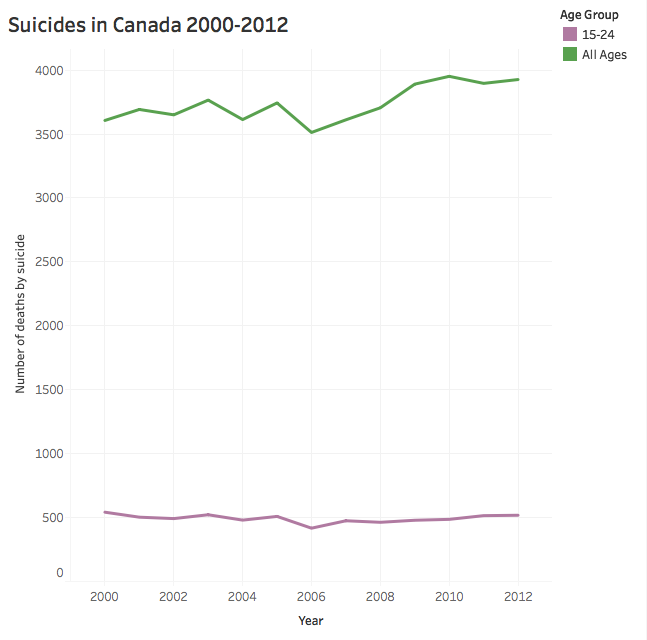The federal election campaign is more than half over, but that hasn’t tipped the scales for Brittany Young, 25, a social work student at Nipissing University. A major factor is weighing on her mind: mental health.
It’s a growing concern among a growing group of voters. Last federal election saw the largest increase in young voters on record. According to an analysis of Statistics Canada’s annual estimates of health characteristics, 58% more 18-35 year-olds reported poor mental health last year, compared to 2015. What’s more, the percentage of 12-17 year-olds reporting the same problem grew by 63%.
However, these numbers take a dramatic turn in older age ranges. There was no increase in the proportion of seniors (age 65+) reporting poor mental health in 2018, versus 2015.
Young was diagnosed with depression and anxiety in 2011. She was 17-years-old, and getting help quickly came with a price she and her family couldn’t pay. She waited months to attend OHIP-covered therapy instead. At one point, she went to her doctor weekly to receive free seven-day sample packs of the medication she needed. “I felt overwhelmed by the world.”
Young, (who remains undecided, but has voted for NDP in the past) said people her age are struggling with stress related to their financial situation, and then can’t afford to access mental health support. She said they’re left trying to schedule their crises around when their paycheques come in or their insurance resets. “It’s a very mandatory need they have and they’re having to budget.”

Young said ever since she turned 18 she’s voted in elections at all levels of government. She even makes sure to vote in student elections. “I know that one vote can make a difference.”
She said she also encourages her peers to be politically involved. “Even saying to your friends, ‘I’m going out to vote, do you want to come with me?’ can help breach the barrier, because they might be afraid to go by themselves. ”
This election, she’s been considering the parties’ promises carefully. She said she wants to know what health-related things each party is planning to do.
The NDP’s platform said access to medication shouldn’t depend on your credit card. They’ve also stated, “Mental health care should be available at no cost for people who need it.”
But Young said she’s not sure making services free will address people’s needs. “You need to make sure you have people who can provide it, so people aren’t waiting.” A 2018/2019 report from the Mental Health Commission of Canada concluded that over 12 million Canadians pay for private services or join long waitlists for publicly funded services.
“If you just put everyone in one streamline, that’s going to have a large line-up,” said Young. She said tailored solutions could reduce wait times for the whole community. The Liberals have promised to help veterans access mental health care, and double disability benefits for families with mentally ill children.
The Green party has promised to create a national mental health strategy and prioritize mental health care expansion. Young said she worries a single national strategy won’t play out the same across Canada. “Each province has its own party, and that skews the results.”
In contrast, the People’s Party of Canada has promised in its platform to make provinces and territories “fully responsible for health care funding and management” and remove federal involvement from these decisions. “But what happens if each province, under the PPC, says, ‘Let’s make it municipal?’” asked Young, “Just further pushing the responsibility onto someone else, and dividing the funds more?”
The Conservative platform will not be released until October 11.
Young said she’s not convinced any party will deliver on their promises. She said she wonders if politicians are simply making promises because mental health awareness is a trendy topic. “Are [they] just saying this to appeal to us?” she asked.
“Because I want someone who’s genuine.”
Still, she’s certain some progress has been made. She said since she was in high school attitudes towards both politics and mental illness among young people have changed. “I think we were a lot more quiet about it. We felt like we had such a small voice.”
“For young people today, they feel like their voice counts. I think they’re talking about it a lot, but they’re also trying to get resources, and they’re advocating to get this help now.”
“I think they’re actually trying to make a change for themselves, so they can survive.”








